calsfoundation@cals.org
Cabot (Lonoke County)
| Latitude and Longitude: | 34º58’28″N 092º01’00″W |
| Elevation: | 295 feet |
| Area: | 20.67 square miles (2020 Census) |
| Population: | 26,569 (2020 Census) |
| Incorporation Date: | November 9, 1891 |
Historical Population as per the U.S. Census:
|
1810 |
1820 |
1830 |
1840 |
1850 |
1860 |
1870 |
1880 |
1890 |
1900 |
|
– |
– |
– |
– |
– |
– |
– |
– |
– |
294 |
|
1910 |
1920 |
1930 |
1940 |
1950 |
1960 |
1970 |
1980 |
1990 |
2000 |
|
441 |
447 |
684 |
741 |
1,147 |
1,321 |
2,903 |
4,806 |
8,319 |
15,261 |
|
2010 |
2020 |
|
|
|
|
|
|
|
|
|
23,776 |
26,569 |
|
|
|
|
|
|
|
In 2009, BusinessWeek designated the northern Lonoke County city of Cabot as an “Arkansas boomtown” and listed it as the state’s third-fastest-growing city per capita. Incorporated on November 9, 1891, the city—best known for its school system—is home to 23,776 people (as of the 2010 census), making it the largest community in the county.
Post Reconstruction through the Gilded Age
The development of the area began in the early 1800s about three miles east of the present city at a small town called Austin (Lonoke County). A stretch of the Butterfield Overland Mail Company stage route passed through the area, and, during the Civil War, a large Confederate camp named Camp Nelson was established nearby. Troops moved in and out of the area during the war. Austin was bypassed in 1873 by the Cairo and Fulton Railroad, and a water and fuel stop was constructed on the site that would become Cabot. Three years later, the Arkansas Gazette described the new settlement as “a place of much promise, although in its swaddling clothes, and is ambitious to divide the trade with her elder sister, Austin.” Cabot was likely named after railroad executive George Cabot Ward.
A city plat was filed at the county courthouse on September 25, 1891. Approximately eight years prior, Dave and Jim Patton had established the first business, a general store. By 1889, the business district, which grew along the railroad tracks, included six general stores, two drugstores, a hotel owned by James Charles Boyd, James Adam’s livery stable, and the Neely brothers cotton gin. Doctors James Milton Park and G. W. Grandberry provided for the town’s medical needs. Grandberry also began publication of the first newspaper in 1885, the Guard. The city grew, and the population had reached almost 300 by 1900.
The first church, First Baptist, was founded in 1876 and was followed by the Cabot United Methodist Church in 1881. As of 2009, the city is home to forty-five churches.
Early Twentieth Century
The Bank of Cabot, which later became part of Centennial Bank, was founded in 1903. Twentieth-century technology came to the city by the 1920s with the installation of a city generator, which provided electricity to subscribers from 6:00 p.m. to 10:00 p.m. each day. A phone system became available about the same time, and radio was introduced in 1920. City water was installed in 1933, replacing the downtown city cistern.
Cabot was a thriving farming community by the 1930s, with a truck farmers’ association forming in 1938. Local dairy farmers formed the Central Arkansas Milk Producers Association in the 1930s. The city also sponsored trade days at which businesses donated items for a drawing patrons entered by making a purchase. The day of the drawing brought large numbers of people into the city.
World War II through the Faubus Era
A number of Cabot citizens served in the armed forces during World War II. However, the greatest impact of the war followed the opening of the Arkansas Ordnance Plant at Jacksonville (Pulaski County) in 1942. During its peak, more than 14,000 people, many from Cabot, were employed at the plant. Large numbers of people moved to Cabot and commuted to work at the plant. The plant closed in 1945, but, by 1950, Cabot’s population, which numbered 1,147, had increased by almost fifty percent since 1940.
The decades following the 1950s saw steady growth in Cabot. Much of this growth was due to the paving of Highway 67 to Little Rock (Pulaski County) and its eventual development into four lanes by the 1960s. Racial discord in Little Rock and Pulaski County also caused many people to move to areas around the capital city such as Bryant (Saline County) and Cabot, an act sometimes referred to as “white flight.” An even greater growth factor was the activation of the Little Rock Air Force Base near Jacksonville in 1955. Many of the base personnel located their families in Cabot.
Modern Era
By 1970, the city’s population had risen to 2,903. As a “bedroom community,” Cabot is home to many who work in Little Rock or elsewhere. The school district is the county’s largest employer, and Cabot continues to be one of Arkansas’s fastest-growing cities.
Disaster hit the city on March 29, 1976, when a tornado swept through the area. The afternoon storm caused millions of dollars of damage to businesses and homes, and five people lost their lives. The city quickly recovered under the leadership of Mayor Willie Ray. To celebrate the recovery, the city initiated an annual festival, called CabotFest, in 1978. The two-day event brings thousands to the downtown area.
Education
Cabot is probably best known for its school system. The first school was opened by Professor G. W. Newton in 1875. A two-story frame building was constructed in 1893. By 1900, five teachers were employed. Prompted by steady growth, the district constructed an impressive brick structure, known as Old Main, in 1915. It was demolished in 1972. The school system was desegregated during the 1965–66 school year. As of 2023, the school has a minority student population of approximately nineteen percent, of which the majority is African American. As of 2022, there are nine elementary schools, two middle schools, two junior high schools, one freshman academy, one high school, two Academic Centers of Excellence, and the Cabot Learning Academy.
Attractions
Local attractions include the Museum of American History, an award-winning museum of history operated by the school system. Located about four miles southeast of city is Camp Nelson Confederate Cemetery, which was added to the National Register of Historic Places in 1996.
Notable Figures
Roark Bradford, an O. Henry Award–winning writer popular in the 1920s, spent his formative years living in Cabot. In 1982, local beauty queen Terri Utley was crowned Miss USA. In 1995, Paula Montgomery of Cabot was crowned Miss Arkansas, followed by Whitney Kirk in 2003. Mike Malham was a high school football coach inducted into the Arkansas Sports Hall of Fame in 2015. Journalist, television producer, and writer Lisa Lee was born in Cabot.
For additional information:
Cabot Chamber of Commerce. Cabot Arkansas: 2009 Community Profile/Business Directory. Little Rock: Canelli Productions Services, Inc., 2009.
Goodspeed Biographical and Historical Memoirs of Central Arkansas: Jefferson, Saline, Hot Springs, Pulaski, Garland, Lonoke, Perry, Faulkner, and Grant Counties. Chicago: Goodspeed Publishing Co., 1889.
Goodwin, Deborah, and Bob Schelle, eds. Images of Cabot, Arkansas: A Visual History. Marceline, MO: Heritage House Publishing Company, 1991.
Polston, Mike. “Towns Named For George Cabot Ward.” The Leader, February 26, 2020, p. 11A.
Polston, Mike, ed. Bits and Pieces of Cabot History. Vol. 1. Cabot: Magee Publishing, 1988.
Polston, Mike, and Debra Carrington Polston. Cabot. Charleston, SC: Arcadia Publishing, 2012.
Tucker, Tyler. “Cabot Regarded as State’s Only Boomtown.” Cabot-Star Herald. February 11, 2009, pp. 1A, 7A.
Mike Polston
CALS Encyclopedia of Arkansas
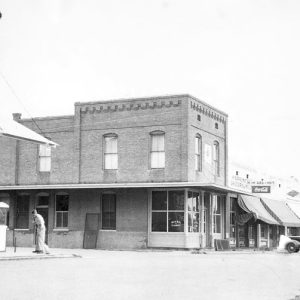 Bank of Cabot
Bank of Cabot 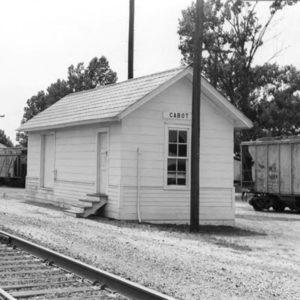 Cabot Depot
Cabot Depot 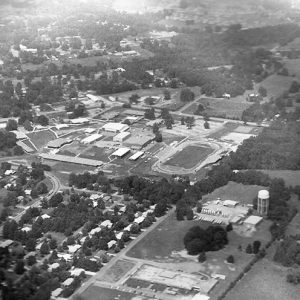 Cabot High School
Cabot High School  Cabot Post Office
Cabot Post Office 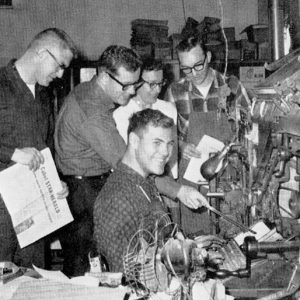 Cabot Star-Herald Staff
Cabot Star-Herald Staff  Cabot Street Scene
Cabot Street Scene 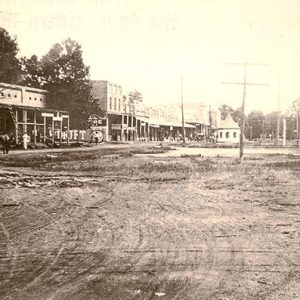 Cabot Street Scene
Cabot Street Scene 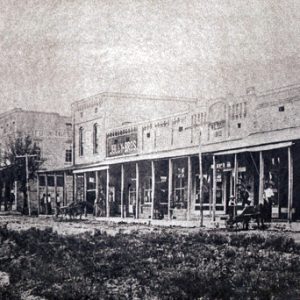 Cabot Street Scene
Cabot Street Scene  Cabot Street Scene
Cabot Street Scene 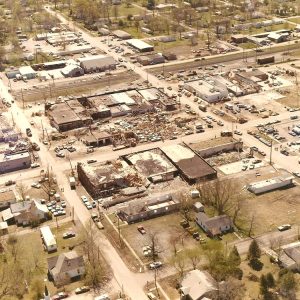 Cabot Tornado Damage
Cabot Tornado Damage 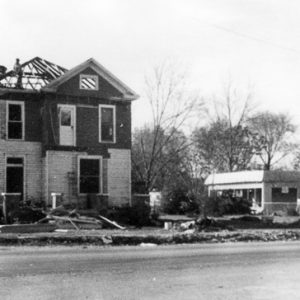 Cabot Tornado, 1976
Cabot Tornado, 1976  Cabotfest; 1980
Cabotfest; 1980  Camp Nelson Confederate Cemetery Entrance
Camp Nelson Confederate Cemetery Entrance 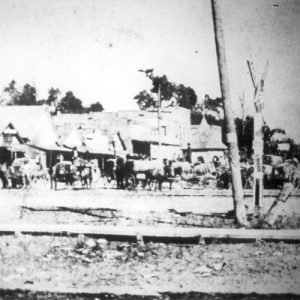 Cotton Wagons
Cotton Wagons  Lonoke County Map
Lonoke County Map 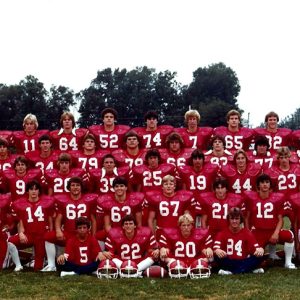 Malham's Cabot Team
Malham's Cabot Team  Museum of American History
Museum of American History 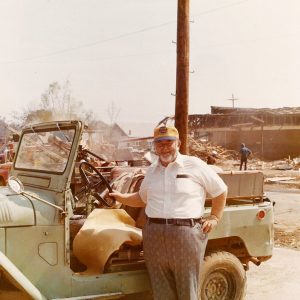 Mayor Willie Ray
Mayor Willie Ray 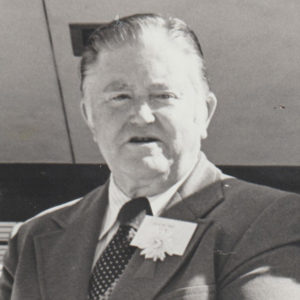 Willie Ray
Willie Ray  Strawberry Festival
Strawberry Festival  Terri Utley
Terri Utley 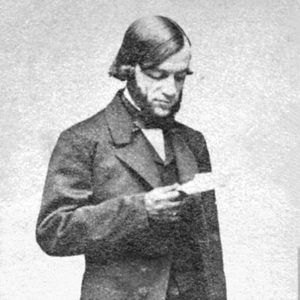 George Cabot Ward
George Cabot Ward 




I was born in Cabot in 1955. Spent most of my life in Cabot. I can tell you that the town saw its best years before the tornado of ’76. After the storm, Cabot went downhill. City planners never looked twenty years down the road. They just started building around the same two streets. Now, they build a school out in the woods and then try to find a way to get to it. Cabot had its share of crooked politicians. At least the storm did blow out the old guard and allow new life to come in. These of course are my own personal opinions.
My kids love living in Cabot. Schools, great community, wonderful people: 1981 to 1985 military life; moving to Texas.